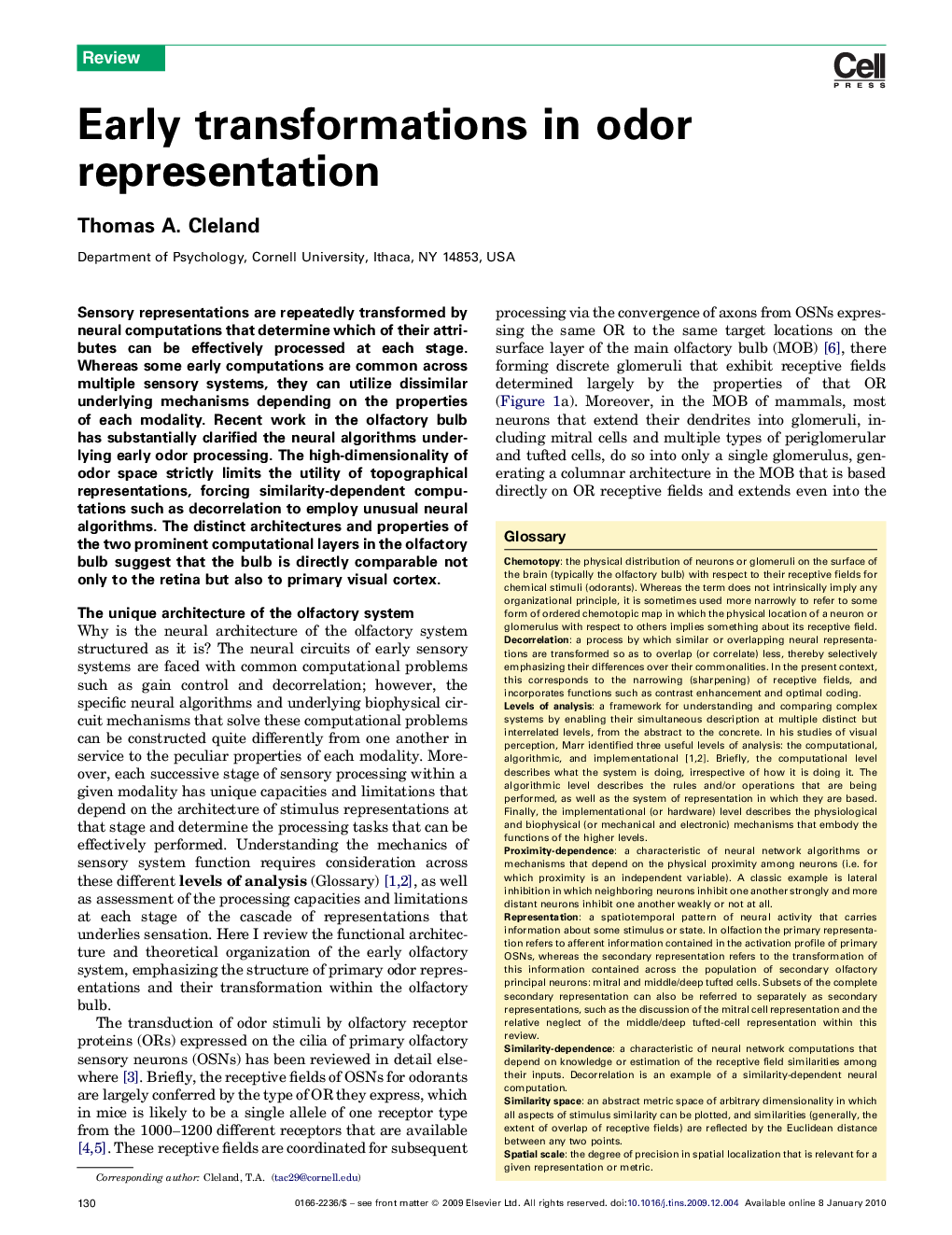| Article ID | Journal | Published Year | Pages | File Type |
|---|---|---|---|---|
| 4354540 | Trends in Neurosciences | 2010 | 10 Pages |
Sensory representations are repeatedly transformed by neural computations that determine which of their attributes can be effectively processed at each stage. Whereas some early computations are common across multiple sensory systems, they can utilize dissimilar underlying mechanisms depending on the properties of each modality. Recent work in the olfactory bulb has substantially clarified the neural algorithms underlying early odor processing. The high-dimensionality of odor space strictly limits the utility of topographical representations, forcing similarity-dependent computations such as decorrelation to employ unusual neural algorithms. The distinct architectures and properties of the two prominent computational layers in the olfactory bulb suggest that the bulb is directly comparable not only to the retina but also to primary visual cortex.
